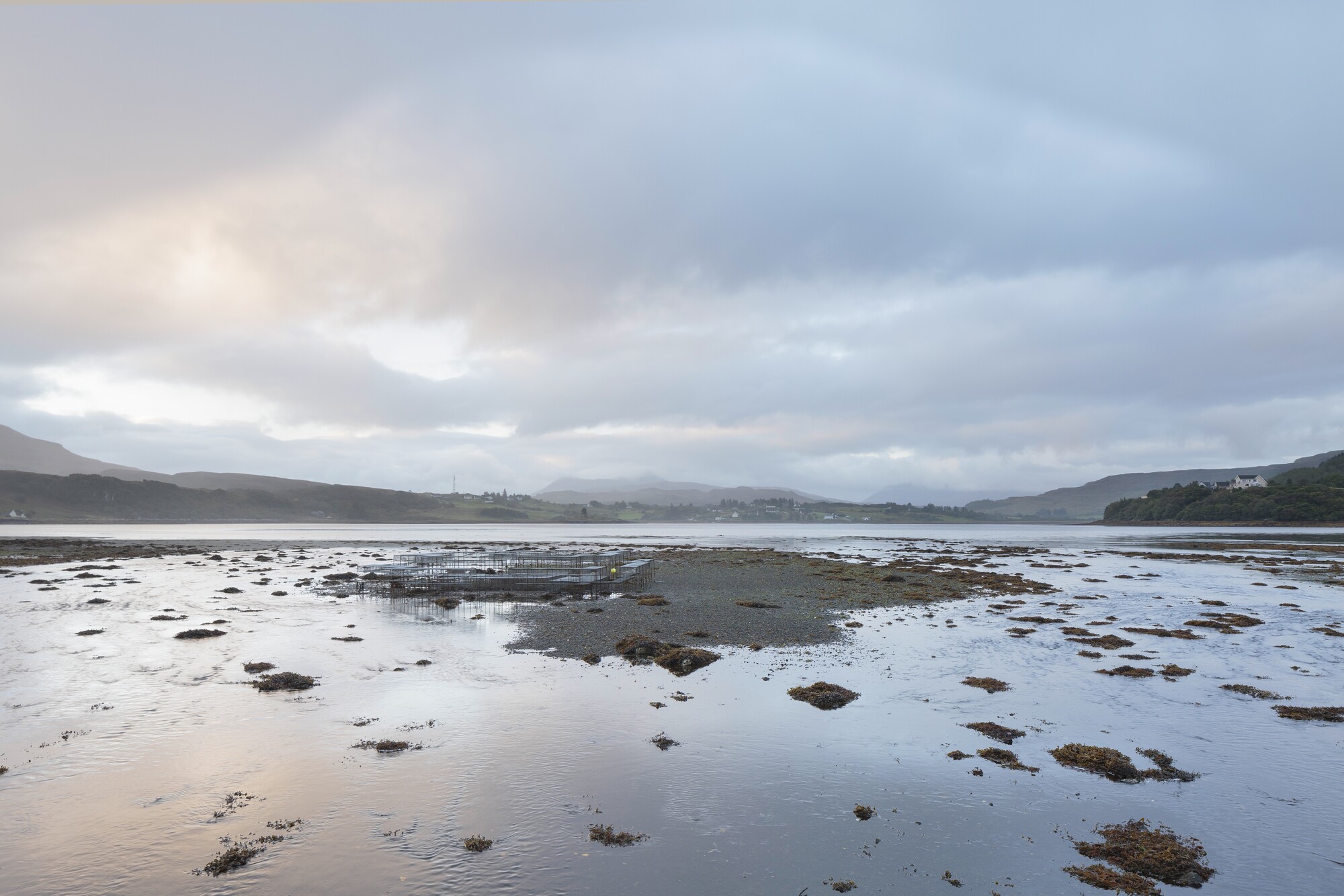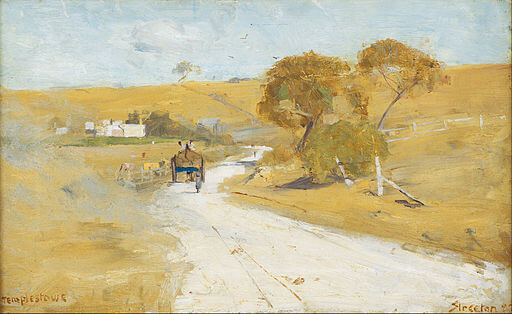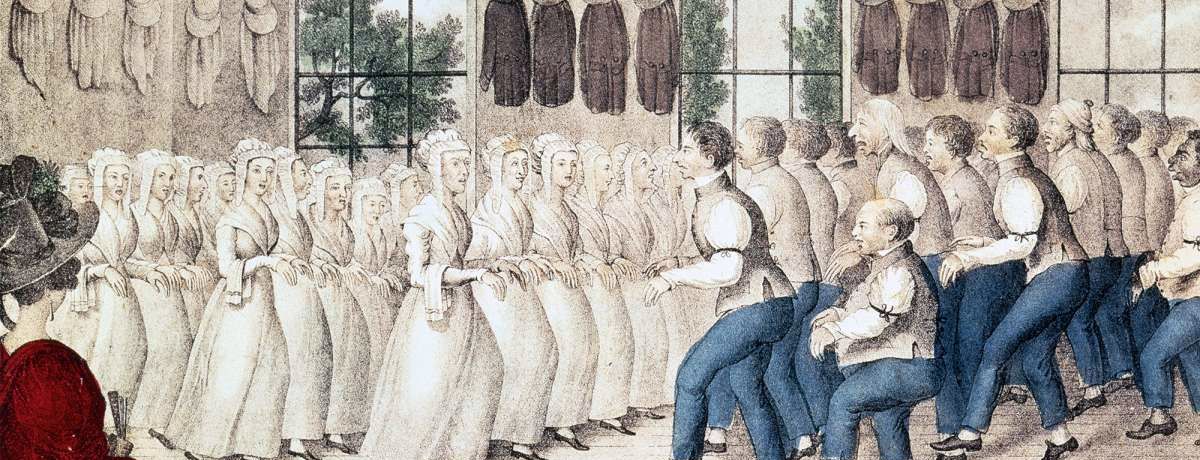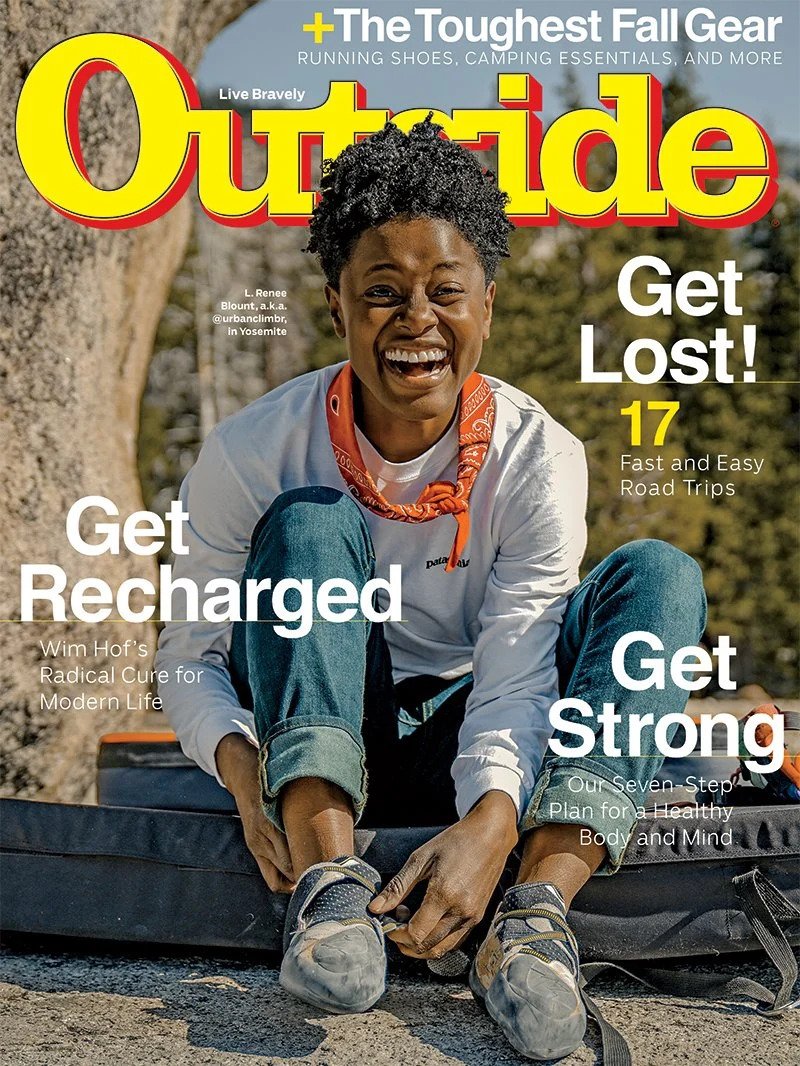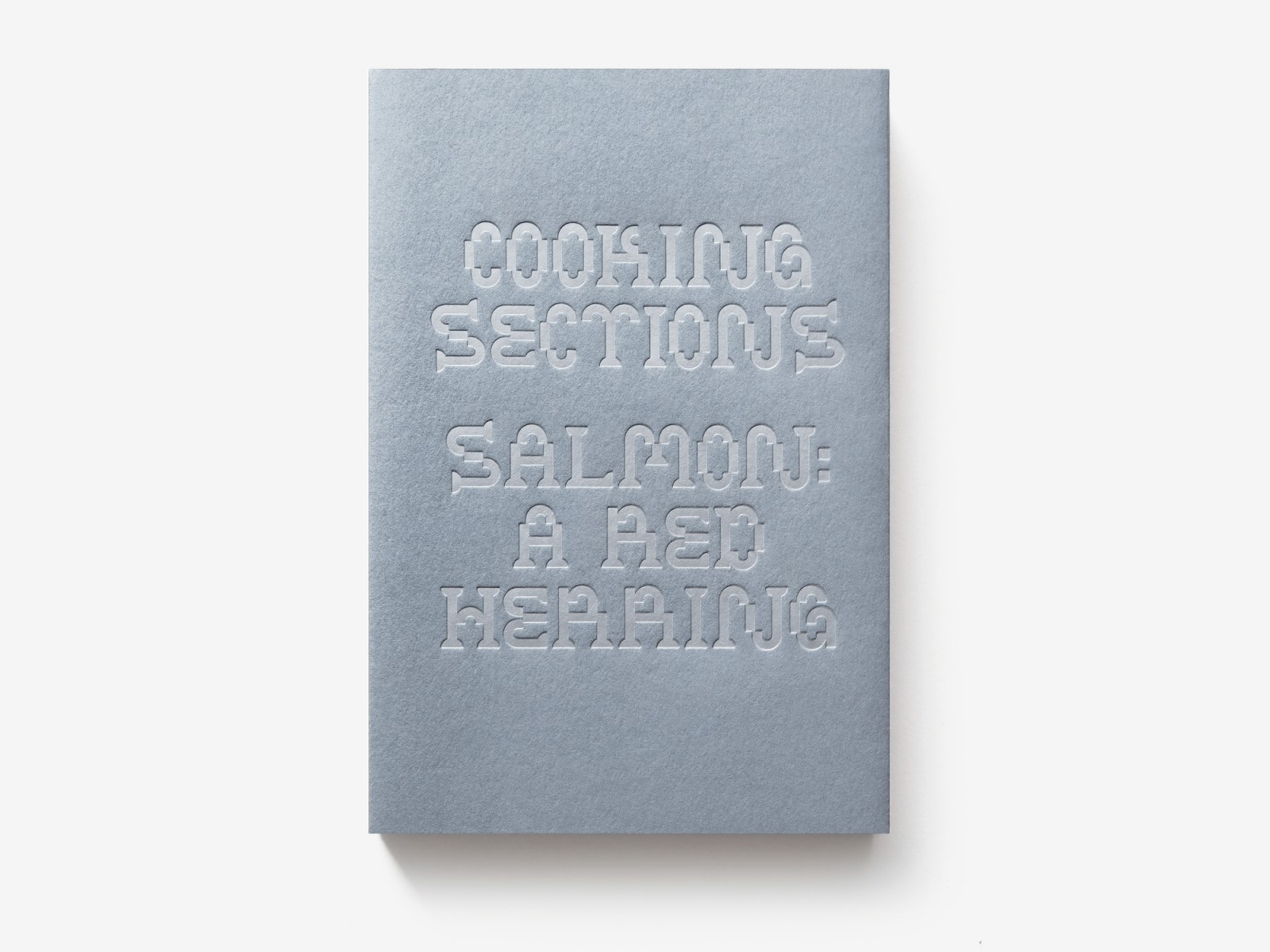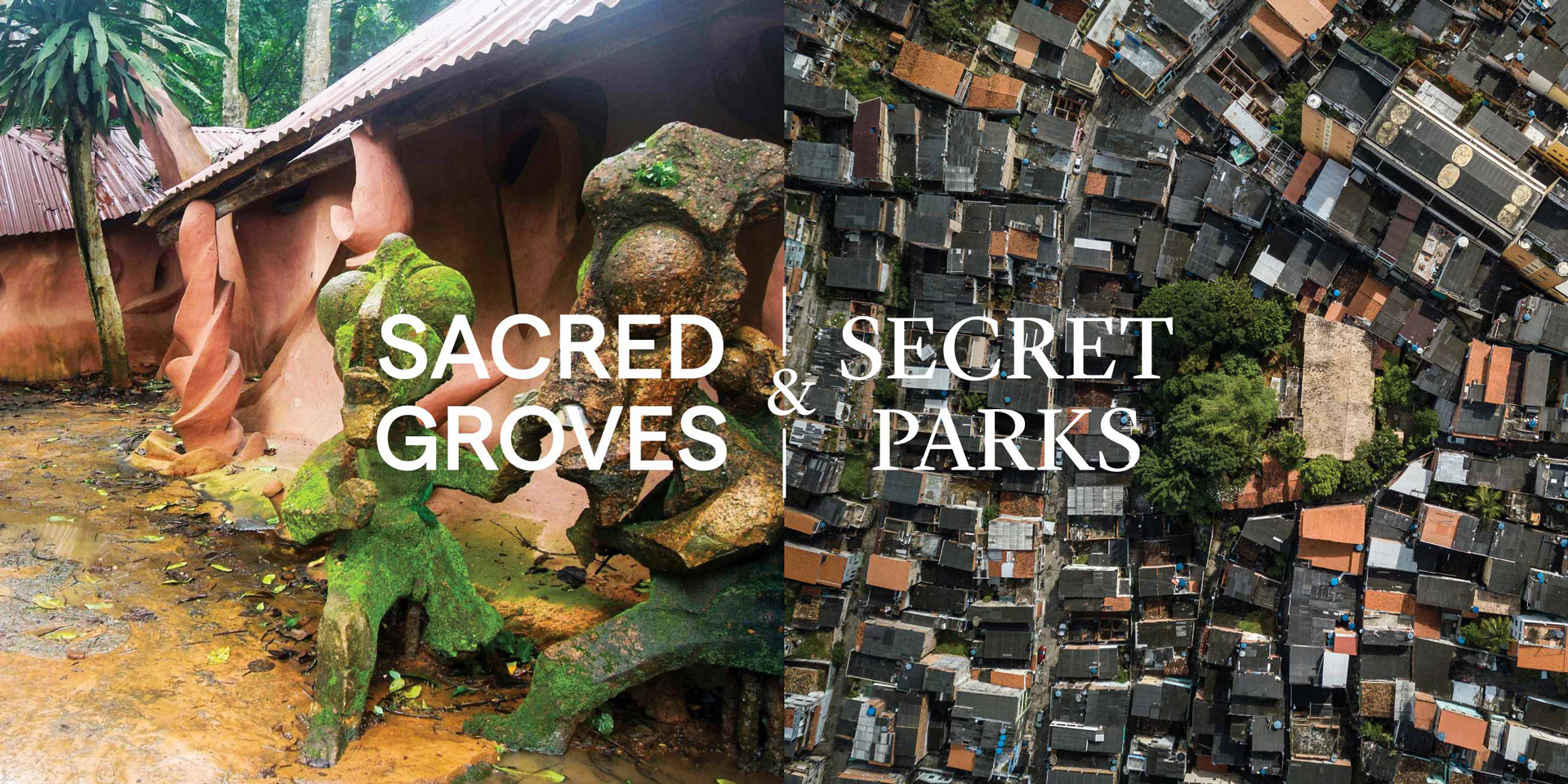Announcing the 2021 Wheelwright Prize cycle, fostering new forms of architectural research
Announcing the 2021 Wheelwright Prize cycle, fostering new forms of architectural research
The Harvard Graduate School of Design (Harvard GSD) is pleased to announce the 2021 cycle of the
Wheelwright Prize, an open international competition that awards 100,000 USD to a talented early-career architect to support new forms of architectural research. The 2021 Wheelwright Prize is now accepting applications; the deadline for submissions is Sunday, January 31, 2021. This annual prize is dedicated to fostering expansive, intensive design research that shows potential to make a significant impact on architectural discourse.
The Wheelwright Prize is open to emerging architects practicing anywhere in the world. The primary eligibility requirement is that applicants must have received a degree from a professionally accredited architecture program in the past 15 years. An affiliation to Harvard GSD is not required. Applicants are asked to submit a portfolio and research proposal that includes travel outside the applicant’s home country. In preparing a portfolio, applicants are encouraged to consider the various formats through which architectural research and practice can be expressed, including but not limited to built work, curatorial practice, written output, and other manifestations of research.
The winning architect is expected to dedicate roughly two years of concentrated research related to their proposal, and to present a lecture on their findings at the conclusion of that research. Throughout the research process, Wheelwright Prize jury members and other Harvard GSD faculty are committed to providing regular guidance and peer feedback, in support of the project’s overall growth and development.
In 2013, Harvard GSD
recast the Arthur W. Wheelwright Traveling Fellowship—established in 1935 in memory of Wheelwright, Class of 1887—into its current form. Intended to encourage the study of architecture outside the United States at a time when international travel was difficult, the Fellowship was available only to GSD alumni. Past fellows have included Paul Rudolph, Eliot Noyes, William Wurster, Christopher Tunnard, I. M. Pei, Farès el-Dahdah, Adele Santos, and Linda Pollak.
Harvard GSD
awarded the 2020 Wheelwright Prize to Daniel Fernández Pascual, whose winning proposal
Being Shellfish: The Architecture of Intertidal Cohabitation examines the intertidal zone—coastal territory that is exposed to air at low tide, and covered with seawater at high tide—and its potential to advance architectural knowledge and material futures.
An international jury for the 2021 Wheelwright Prize will be announced in January 2021. Applicants will be judged on the quality of their design work, scholarly accomplishments, originality or persuasiveness of the research proposal, evidence of ability to fulfill the proposed project, and potential for the proposed project to make important and direct contributions to architectural discourse.
Applications are accepted online only, at wheelwrightprize.org; questions may be directed to info @ wheelwrightprize.org Will urban life recover when the pandemic is finally over? Alex Krieger on the fate of the American city after Covid
Will urban life recover when the pandemic is finally over? Alex Krieger on the fate of the American city after Covid
Yes, the pandemic (somewhat understandably) and the protests for justice (sadly) are leading to a partial withdrawal from our cities. Of course, such departures have occurred a number of times over the course of American history. Americans have not needed much encouragement to seek a bit of space between themselves and the “rasping frictions” of big city life.
Prior to the pandemic, American cities were on a roll. Since the turn of the millennium at least, America was actually witnessing an urban revival. Suburbia had lost much of its appeal for the generations that grew up in it, and memories of mid-century urban decay had largely faded. Editorials in urban newspapers announced “the cachet of a city zip code.” Pundits welcomed the arrival of the creative class, and promised an extended era of urban fortune assured by the commitment to city life by the millennial generation. Even some empty nesters were happy to part with lawn mowers in exchange for more convivial urban contexts.
Now in 2020, many people are again falling prey to anxieties about cascading urban problems. We have been reminded that density aids in the spreading of disease. Street protests—even on behalf of just causes—remain somewhat unnerving, especially when they turn to destructive actions. Urban crime rates, after falling for several decades, are once again in the news. More than a few political leaders are stoking fear and divisiveness. In cities, the cost of living, especially for decent housing, seems to increase faster than population gain.
Will there be adjustments as a result of our current crises? Absolutely. Since the Industrial Revolution, Americans have viewed cities as sources of congestion, pollution, crime, undue class competition, the spread of infectious diseases, and too harried a daily life.
Alex KriegerOn health and livelihood within the American city in face of the pandemic
Then comes a new possibility: the untethering of work from the places designated for work. Companies forced to vacate offices due to the pandemic are beginning to question the necessity of ever fully returning to downtown office towers. Employees are assessing the personal and financial benefits of cutting out commutes, having greater daily flexibility, and enjoying more family time while working from home.
Should we succumb to urban anxieties? Or, will cities recover their appeal (unaffordability aside) when the pandemic is conquered? History makes those of us who love cities maintain some optimism. After all, we have become an urban species. Neither devastating fires when cities were made of wood, nor the cholera of Dickens’s London, nor the urban bombardments of World War II, nor the postwar fears of nuclear holocaust, nor even the shock of 9/11 fundamentally altered the pull to urbanize. Neither will COVID-19 over the long term (barring arrivals of COVID-20, 21, etc.). Cities have been, and will remain, in Claude Lévi-Strauss’s memorable phrase, “the human invention par excellence.”
There are advantages to living in a city that are not replicable with digital software. Days filled with Zoom calls and on-line shopping are not an adequate replacement. Today’s global institutions and economies advance with a metropolitan bias—powered by the concentration of innovation-minded talent and entrepreneurial zeal. Some 60 million people have been annually migrating to the world’s cities. They do so, as people have done for centuries, in search of opportunity, economic security, and the promise of a better life. Today’s anxieties will not lead to half of the seven billion inhabitants of earth who currently live in urban regions to all flee to exurbia, or Montana, or the steppes of Russia. (But some rebalancing between immense urban concentrations and smaller and mid-sized cities may be a good thing.)
Will there be adjustments as a result of our current crises? Absolutely. Since the Industrial Revolution—and the accompanying prodigious migrations to urban areas from subsistence farms and across oceans—Americans have viewed cities as sources of congestion, pollution, crime, undue class competition, the spread of infectious diseases, and too harried a daily life. The idea of the garden suburb emerged in reaction to the squalor unleashed by industrial urbanization. And at least since the Transcendentalists, a bucolic setting has been considered ideal for family life.
Now that the possibility of enjoying a hospitable setting while remaining connected to jobs and centers of enterprise has finally become a reality (after having been predicted since the earliest days of the digital revolution), decisions about where to live and commercial investment in city centers will surely be affected. But even as we’re discovering that we can live and work “anywhere,” the inadequacies of life tethered only to home and computer monitors are being revealed. A rebalancing of the domains of work and life will continue, and will affect the planning of cities, especially with regard to density, but to what extent remains uncertain. Predictions about the future rarely come to fruition.
Oscillation between the allure of the city and the allure of living free of city stress has recurred throughout American history. The pandemic will certainly cause some people to seek a haven away from the hustle and bustle, or over anxiety about future pandemics. Still, since global institutions and economies will continue to advance with that metropolitan bias, many more people will continue to partake of all of the cultural riches found in great city centers than will flee for the promise of a safer, if less full, life.
Alex Krieger, Principal, NBBJ. Professor of Urban Design, Harvard University. Author of City on a Hill: Urban Idealism in America From the Puritans to the Present. Pier Paolo Tamburelli on the “hardscrabble, repressed, and perverted” American Gothic psyche
Pier Paolo Tamburelli on the “hardscrabble, repressed, and perverted” American Gothic psyche
In
Sherwood Anderson’s collection of short stories, Winesburg, Ohio, the author constructs a portrait of a small town through interrelated tales of its inhabitants’ daily lives. Anderson based the stories on his own experience growing up in Clyde, Ohio. The book, published in 1919, was perceived at the time as hardscrabble, repressed, and perverted: hallmarks of the American Gothic psyche.
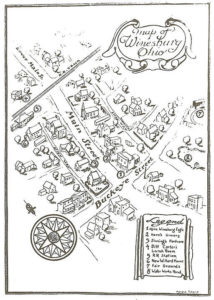
Map of Fictional Wineburg, Ohio from the first edition of Sherwood Anderson’s book “Winesburg, Ohio” (New York: B.W. Huebsch, 1919).
A century later, Winesburg, Ohio, is considered a modern classic. It owes its longevity not to shock value but to how astutely it portrayed a society on the cusp of colossal change. At a time when political upheaval has brought attention to small towns in the American Midwest, architect and Harvard Graduate School of Design professor Pier Paolo Tamburelli took Clyde, Ohio, as a case study for the Department of Architecture studio
“American Gothic, Monuments for Small-Town Life.” Under his supervision, the course created a design hypothesis for a new church in Clyde, exploring the role of architecture in communities that feel they’ve been abandoned and yet recur as a major motif in the American imagination.
“I wanted to ask the students to design a building with a social role, and then I had to accept that in this context the only realistic option was a church,” says Tamburelli, who co-founded Italian architecture office
baukuh. He encouraged students to design a simple architectural object knowing that, in the end, “a building is a building.” But he wanted them to know that a building is also an opportunity for a reflection on what he described as “the supreme indifference to space of the American Protestant tradition” in an essay published in Cult and Territory. Here, Tamburelli speaks of the enduring relevance and intrigue of towns such as Clyde and to what extent context should lead creativity when designing public projects for them.
How did your investigation of the American church come about?
Maybe we can start with a relatively simple, even banal observation: I’m from the countryside in northern Italy, so I’m familiar with provincial places. In a way, they all look the same. And I had been teaching in Chicago prior to Harvard, so I’m also familiar with the Midwest. Of course, the implicit background for the studio is the fact that Donald Trump was elected president of the United States, in part by exploiting a sense of abandonment in a large segment of impoverished white Christians, who used to consider themselves the “silent majority” and just discovered they are no more.

Wyeth, W. (1947). Dodges Ridge.
I thought, “How are these communities actually operating? And how, at least in theory, is it possible to overcome a loss of social fabric in these contexts?” So we went to take a look, and decided to focus on Clyde, Ohio. I read Sherwood Anderson’s Winesburg, Ohio. The fictional Winesburg is based on Clyde. Nowadays it has 5,000 inhabitants, more or less, and there’s a gigantic factory producing Whirlpool washing machines. Our studio went to Clyde; we talked to the mayor and saw the different congregations. I think the perception of the people we spoke to was that we were maybe a bit strange, but sincerely interested. We also went to visit some extremely good architecture that has been realized in that region in the last 50 years.
What drew you to the region from an architectural perspective?
Probably the building that we were the most interested in was the
Calvary Baptist Church by Gunnar Birkerts. It’s an orange hybrid—in between a pyramid and a barn—that somehow landed in the suburbs of Detroit. We met Lawrence T. Foster, an African American pastor who majored in theology at Harvard, who was an excellent guide into understanding the story of that specific congregation—its role in Detroit and so forth. We also went to Birkerts’s Law Library in Ann Arbor, which is amazing. It was a bit of a Gunnar Birkerts celebration tour.
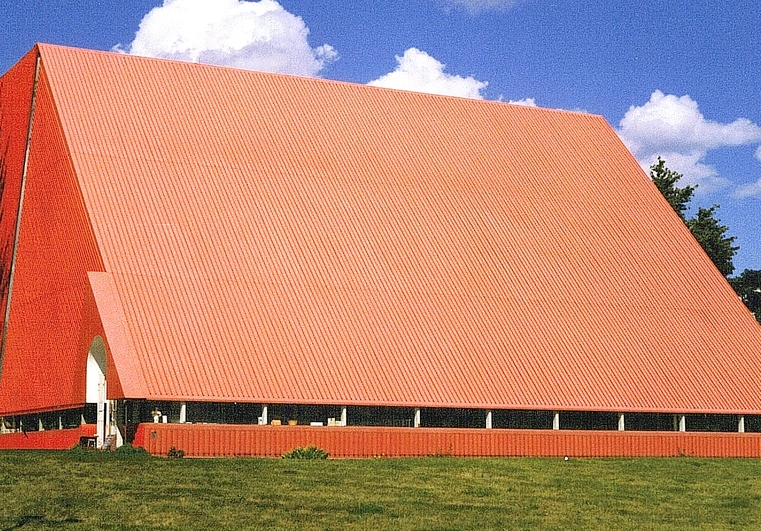
Gunnar Birkerts, Calvary Baptist Church, Detroit. Image by Anthony Lockhart.
I have no idea. I have no theory on churches. I suspect that churches are just buildings like others. They should be convincing as buildings, as architecture. Maybe a church should be capable of suspending the everyday preoccupations—at least for a little bit—and creating a space for something else. Actually, the church as a religious institution was not so important for the studio. I just wanted the students to design a public building in Clyde, and a church was the simplest possible public building in that context. (The only other option was a school, there’s not much else.) I also wanted to avoid a discussion over whether the church should be Catholic or Protestant, or whether it would be better to do a mosque or synagogue because that was not really the scope. I was not so interested in the church as a building, or as a religious experience, but as a place to build a community. I looked for a mainstream Protestant congregation, and we ended up with Methodist.
You were thinking about a disenfranchised, white, Christian minority, as you described it, and you wanted your students to design churches that could rekindle a sense of community…
These things provide background, but they are not a direct input for design. In a way it is not possible to design something like that. It is not possible to rebuild a community by means of architecture. So we moved from the larger investigation of the cultural landscape to the strictly disciplinary. To do that, I asked the students to design the church simply as architecture. The way in which the students would take a position on the wider cultural subjects should pass through the simple fact of designing a church. The studio was an interesting combination: on one side, trying to use architecture as a tool to explore a place and a culture, and on the other side, taking a very strict disciplinary approach to architecture.
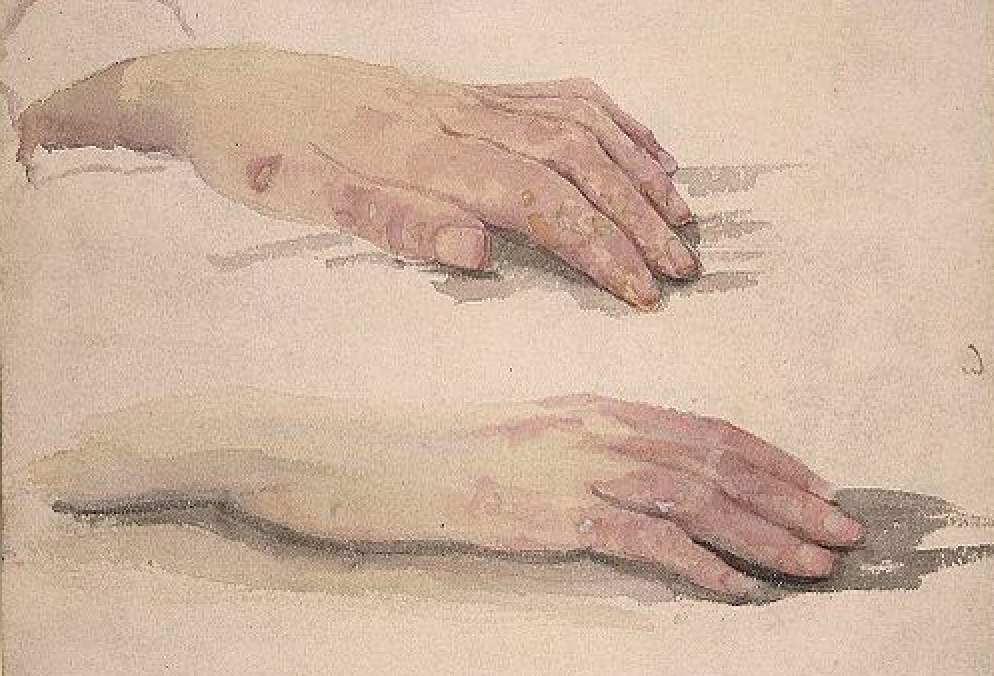
From Hands, Concerning Wing Biddlebaum from Sherwood Anderon’s “Winesburg, Ohio” (1919).
In the studio, we discussed a tradition of Europeans coming to America and often being fascinated by these vast, sparsely populated expanses at the center of the country. I tried to be honest in declaring my position as a European who looks at America that way.
I mean, if you’re Italian, the size of the American Plains or the Midwest is incredible. You come from this densely populated country where everything was already settled 2,000 years ago—where every corner has been reshaped, every hill has been polished through ages of adjustments. And then you get to this new landscape where everything is, first of all, so much bigger. The landscape is familiar because it’s the countryside, and also because you saw it in so many American movies while growing up in Italy. And yet there’s something that doesn’t exactly match up. It’s very difficult to describe because it is a sort of a gray area: you are not capable of seeing what is different, so you cannot give it a name. People who came to the US from Europe tried to replicate what they left behind. In Ohio or Iowa, you have these barns that are so-called Dutch, but they really don’t look Dutch.
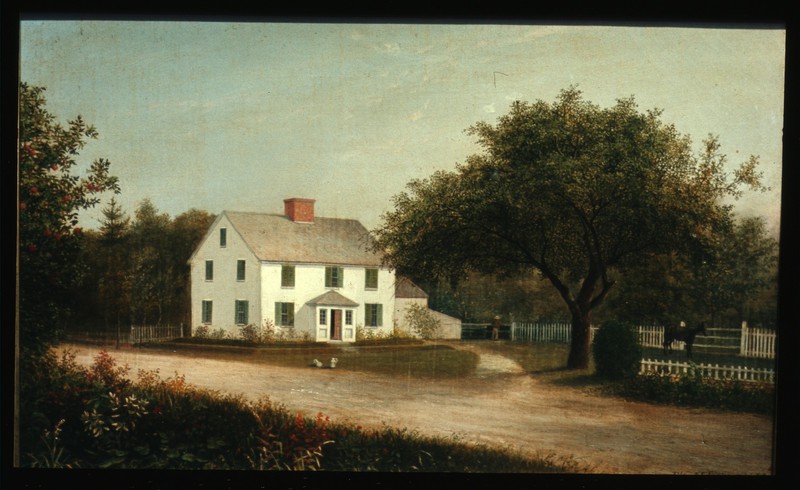
Lane, L, Old Stevens’ Homestead, Castine (1859).
We wanted to look at these social groups without coming to any final theory. We just tried to design buildings. That’s what we do. But we thought this was a phenomenon that was interesting and that it was, for a while, overlooked. And of course things are complex: the traditional Christian churches are certainly in a crisis. We didn’t know there was a schism brewing between two components of the Methodist Church, for example.
Did the designs of the buildings generated by students respond to the schism?
Sure. I think every student tried to fit the project into that context. Strangely, a lot of American students applied for this class. I think it somehow struck a nerve. Perhaps it was easier for me to do this than for an American teacher. Sometimes a bit of distance, even a bit of ignorance helps you. You don’t get scared by the complexity of the problem.
Preston Scott Cohen’s Post-Shaker studio draws on the austere formal language of Shaker design in proposing a new art colony in Mount Lebanon, NY
Preston Scott Cohen’s Post-Shaker studio draws on the austere formal language of Shaker design in proposing a new art colony in Mount Lebanon, NY
Mount Lebanon, NY has faded. When its last seven inhabitants moved away in 1947 it was already diminished, and now it is an exquisite shadow. For 160 years, 600 Shakers built a community in hundreds of buildings on 6,000 collectively owned acres. Just 10 original buildings remain, and the town has become one of the most endangered historic sites in the world. Last fall, Preston Scott Cohen challenged 12 GSD students in his “
Post-Shaker” studio to propose architectural designs for Mount Lebanon as it enters another time of transformation. With the Shaker Museum’s purchase of a new building for its collections in Chatham, NY, and a successful implementation of an artist-in-residence program in Mount Lebanon, the village will take on new life. Cohen asked his students to envision this revitalization and to “speculate on the establishment of a new art colony” there.
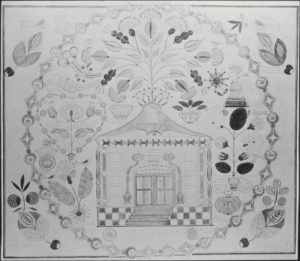
Mount Lebanon Shaker Village, New Lebanon, New York, United States. (n.d.).
The site presents great challenges primarily because to design for Mount Lebanon today, Cohen explains, is to “operate in a very complex middle ground” between an inaccessible past and an indeterminate future. It requires consideration of the strict preservation that is already under way and the inevitable need for adaptation of the site as it accommodates new functions. In this context, Cohen proposes that designers must address the austere formal language of Shaker design, not merely as a set of historical design strategies and elements but as an expression of the Shakers’ unorthodox cultural ideals, which are still deeply relevant as fragments of the village persist.
After their founding in England and subsequent emigration to the United States in 1774, the United Society of Believers in Christ’s Second Appearing (as the Shakers referred to themselves) established communities in New York, Massachusetts, Connecticut, Maine, New Hampshire, Ohio, Kentucky, Florida, and Indiana. These believers, like many other European religious groups—Puritans, Calvinists, Quakers, Baptists, Anglicans, Presbyterians, Methodists, Catholics, Pietists, Unitarians—settled and thrived in the American colonies. Each had its own idiosyncrasies, but the Shakers were perhaps the most unusual among these groups.
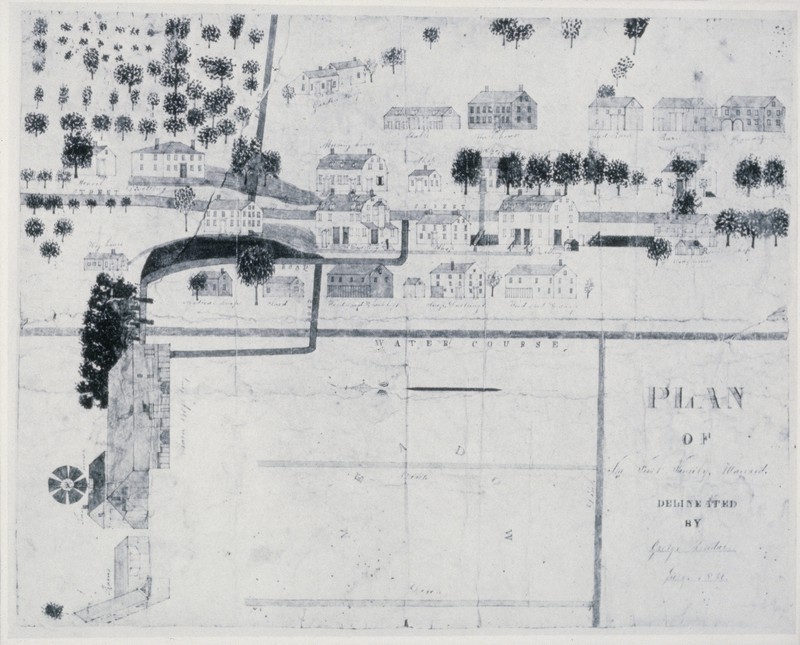
Priest, P., & Kendall, K. (1836). Shaker Village, Church Family Buildings, Harvard, Massachusetts, United States.
Aside from the rapturous dancing, twitching, and gesticulation in the services that distinguished their worship, the most consequential difference between the Shakers and other religious groups lay in their rejection of the typical male dominance over spiritual life. They believed that “Christ’s Second Appearing” manifested in their first leader, Mother Ann Lee, whom they saw as the personification of the feminine part of God’s duality. Accordingly, the duality and balance of the genders became central to Shaker beliefs, and it strongly shaped their way of life and the buildings that accommodated it. Cohen explains, “The Shakers believed in and practiced pacifism, gender and racial equality, and celibacy” and that the precise formal language of design they developed reflected these principles.
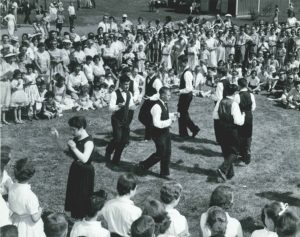
Villagers performing Shaker songs and dances at the Shaker Museum Antiques Festival, 1956
To ensure the integrity of their lifestyle and to avoid persecution, the Shakers almost completely removed themselves from the larger society around them. They formed autonomous communities of self-sufficient “holy families” that developed efficient agricultural techniques, productive craft workshops, and a highly refined version of American vernacular architecture. The village of Mount Lebanon was the first of these and acted as a model for other Shaker communities elsewhere. Founded by Lee’s successor, James Whittaker, after her death in 1784, it grew rapidly to include six holy families—Church, Second, South, Center, North, and East. The largest of these, Church Family, included 233 adult members by 1789. The egalitarian and communal nature of Shaker communities eliminated traditional, paternal family structures and other social hierarchies, but maintained strict separation of male and female roles.
Men and women shared leadership of the community, but assumed different responsibilities and produced different things—men built the furniture and women wove the cloth, for example. This played out in all aspects of family life and in the ordering and design of their buildings. They distinctly separated male and female work spaces and sleeping quarters but joined the family together for worship, meals, and other communal functions. Cohen points out that the “binary/non-binary treatment of gender roles” strongly affected more than just the arrangement of spaces in the Shaker village, however. It also controlled the fundamental character of Shaker design, which had “a very particular formal language” that played out at all scales, from the organization of buildings to the precise articulation of the smallest details.
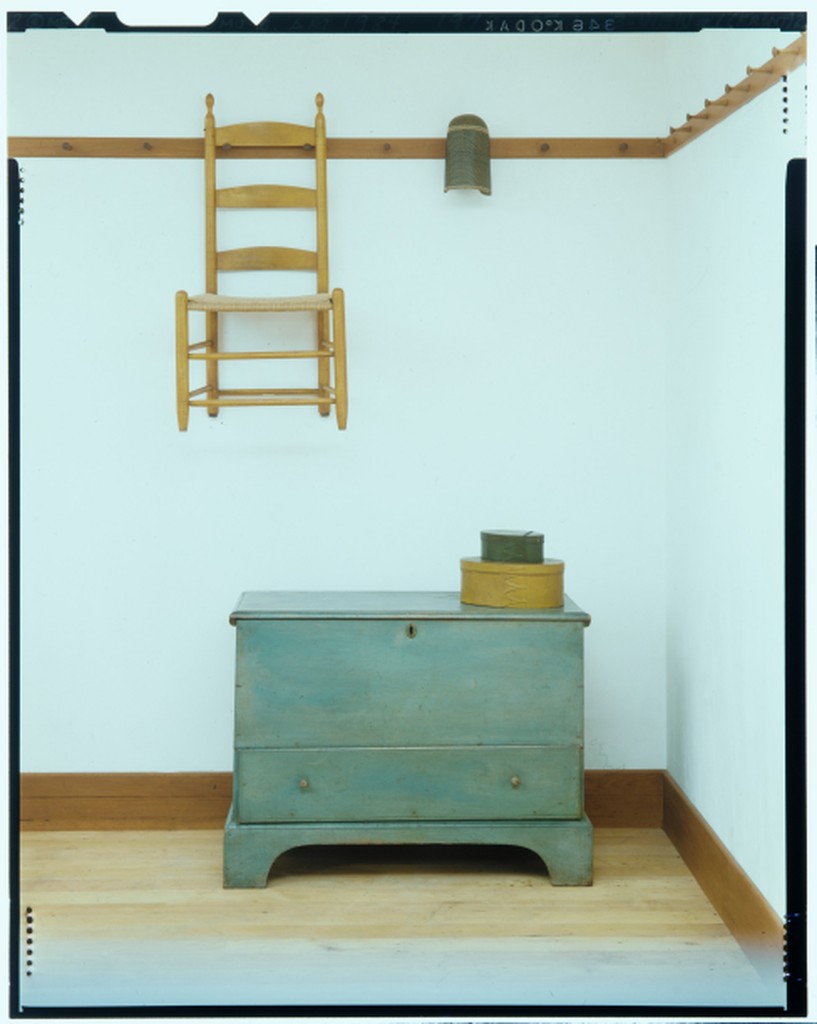
Architectural elements from North Family Dwelling, New Lebanon, New York. ca. 1830-40.
So, when Cohen challenged students to design a new building for an art colony in Mount Lebanon, the central question he asked them to keep in mind was, “What would the Shakers have done?” Answering this question, they could begin to “speak the Shaker language in their own accent.” They would need to do this while navigating between the requirements of preservation and adaptive re-use, and with an understanding that Shaker design resides somewhere between an American rural vernacular and a precise functionalism that, Cohen proposes, is almost “proto-modern.”
The studio began with research about Shaker culture, its differentiation of genders and their labor, its connection to the outside world, its design language. The studio group also visited Mount Lebanon, where they studied the Shakers’ buildings and products. They examined particular sites between the existing buildings that were formerly occupied by North Family. Most of these are typical of Shaker architecture: simple rectangular forms with gabled roofs, white clapboard siding, symmetrically arranged windows, and gender-specific doorways, work spaces, and circulation. However, prominent among these buildings, the stabilized ruin of an immense stone dairy barn built in 1859 is unusual and inconsistent with typical Shaker design, complicating visitors’ conception of Shaker architecture. This added to the complexity of the students’ task of designing to fit into a Shaker context.
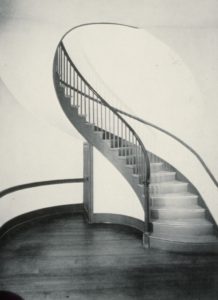
Kendall, K. (1835). Shaker Village, Pleasant Hill, Kentucky, United States.
Throughout the studio, Cohen explains, it was necessary for students to “find a way to work on cultural connections.” They had to develop a clear understanding of the Shakers’ formal language as a manifestation of the community’s unorthodox values, while also finding “the motivations inherent to [their] own intuitions, ideas and plans,” which are naturally reflective of contemporary culture. Design work started with experiments in symmetry. In the studio brief, Cohen emphasized that the Shakers’ formal language involved complex symmetries.These symmetries, which had both practical and divine overtones, became the springboard for the students’ rich design investigations. Cohen challenged them to play with symmetry: to develop, for example, “unusual dual symmetry” at the scale of rooms; “alterable symmetries” using movable walls and furniture; complex volumetric symmetries in stairs and circulation systems; and “oddly symmetrical” arrangements of building masses using “typical features of Shaker traditional buildings (gables, dormers, typical windows and doors…).” The key in these exercises was to explore new accents of Shaker architecture that were “plausibly Shaker in sensibility.”
While much of the inspiration for these experiments in architectural symmetry derived from traditional Shaker design, Cohen emphasizes that it also developed out of his own long-standing interest in complex architectural symmetries, dating back at least as far as his 2001 book, Contested Symmetries and Other Predicaments in Architecture, which describes methods of creating complex designs using geometrical operations on familiar forms. The students’ final designs for Mount Lebanon in the “Post-Shaker” studio demonstrate how effectively the precise architectural language of Shaker architecture lends itself to the geometrical operations Cohen and his students explored. Each project seems simultaneously familiar and strange. Simple, gabled volumes shift and overlap; precise moldings wrap around doors and windows into the deep space of interpenetrating rooms; volumes twist with the terrain and struggle to maintain balance; rectangular doors and windows reflect across multiple oblique axes; gender-specific stairs and hallways wrap around each other only to join at unexpected moments.
While the Utopian Shaker experience of Mount Lebanon has long faded, its precise architectural language still speaks loudly today. The “Post-Shakers” in Preston Scott Cohen’s GSD studio found and voiced 12 new inflections of that powerful idiom.
Excerpt: Turning Migrant Workers into Citizens in Urbanizing China, by Pengfei Xie
Excerpt: Turning Migrant Workers into Citizens in Urbanizing China, by Pengfei Xie
“Five years ago, the Harvard Graduate School of Design’s
Just City Lab published
The Just City Essays: 26 Visions of Inclusion, Equity and Opportunity. The questions it posed were deceptively simple: What would a just city look like? And what could be the strategies to get there? These questions were posed to mayors, architects, artists, philanthropists, educators and journalists in 22 cities, who told stories of global injustice and their dreams for reparative and restorative justice in the city.
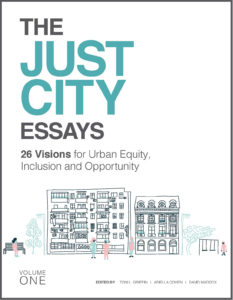
These essays were meant as a provocation, a call to action. Now, during these times of dissonance, unrest, and uncertainty, their contents have become ever more important. For the next 26 weeks [starting June 15, 2020], the GSD and the Just City Lab will republish one essay a week here and at
designforthejustcity.org. We hope they may continue conversations of our shared responsibility for the just city.
We believe design can repair injustice. We believe design must restore justice, especially that produced by its own hand. We believe in justice for Black Americans. We believe in justice for all marginalized people. We believe in a Just City.”
—Toni L. Griffin, Professor in Practice of Urban Planning, founder of the Just City Lab, and editor of The Just City Essays
Turning Migrant Workers into Citizens in Urbanizing China
By Pengfei Xie
One of the root causes of inequity is urban and rural differentiation.
China is experiencing a massive migration to the cities, mostly due to the availability of jobs and better facilities. But the way the government administers “citizenship” also creates inequity and poverty. Since the founding of the People’s Republic of China in 1949, the country has adopted an administrative system of dualistic rural and urban structure in order to promote industrial development and guarantee food security of the then poor nation. The Chinese central government prioritizes urban development over rural development. Rural and urban areas carry out and implement different mechanisms of land ownership, housing, household registration and social welfare policies. Compared to the rural areas, many more resources concentrate into urban districts, including public services, investment and labor forces. This drives huge disparities of employment and wellbeing, and results in the relative poverty of non-urban areas.
With the rapid urbanization in China, millions of farmers leave the land each year for urban jobs. But because they are not allowed to have registered permanent urban residence status—called HUKOU; their residency remains in their original territory—these migrant workers and their families can’t enjoy facilities and services as the non-migrant urbanites do, including social insurance and health care. This has caused inequity, poverty, and the potential for social instability in many Chinese cities. Migrant rural Children in urban areas do enjoy free schooling in theory. But the opportunity costs for school for rural children are higher than urban children. For example, the urban house rent and living expenses are usually unaffordable for them.
With the rapid urbanization in China, millions of farmers leave the land each year for urban jobs. But because they are not allowed to have registered permanent urban residence status—called HUKOU; their residency remains in their original territory—these migrant workers and their families can’t enjoy facilities and services as the non-migrant urbanites do, including social insurance and health care. This has caused inequity, poverty, and the potential for social instability in many Chinese cities. Migrant rural Children in urban areas do enjoy free schooling in theory. But the opportunity costs for school for rural children are higher than urban children. For example, the urban house rent and living expenses are usually unaffordable for them. Continue reading on designforthejustcity.org…
Bernhard von Oppersdorff (MDes ’22) wins Pension Real Estate Association scholarship
Bernhard von Oppersdorff (MDes ’22) wins Pension Real Estate Association scholarship

Bernhard von Oppersdorff (MDes ’22)
Bernhard von Oppersdorff (MDes ’22) has been awarded a
Pension Real Estate Association (PREA)
scholarship for the 2020–2021 academic year, one of ten students to receive the honor this year. The scholarship is awarded annually to graduate students majoring or concentrating in real estate. In addition to a cash prize, recipients are invited to the Annual Institutional Investor Real Estate Conference.
Von Oppersdorff is a first-year student in the Master in Design Studies (MDes) program’s
Real Estate and the Built Environment (REBE) concentration at the Harvard Graduate School of Design, where he was awarded the Dean’s Merit Scholarship. He is concentrating his studies on deal structuring and urban redevelopment. Prior to studying at the GSD, von Oppersdorff worked as a project manager in development and acquisitions at BEOS AG, a German mixed-use industrial real estate firm. He began his professional career as a financial analyst and consultant to Oaktree Capital’s real estate opportunities funds in Los Angeles.
Von Oppersdorff earned a BSc in International Politics and Law with honors from Georgetown University. Upon graduation, he plans to return to the opportunistic real estate investing sphere focusing on distressed and over-leveraged real estate in need of rescue capital or asset repositioning.
Excerpt: Creating Universal Goals for Universal Growth, by Betsy Hodges
Excerpt: Creating Universal Goals for Universal Growth, by Betsy Hodges
“Five years ago, the Harvard Graduate School of Design’s
Just City Lab published
The Just City Essays: 26 Visions of Inclusion, Equity and Opportunity. The questions it posed were deceptively simple: What would a just city look like? And what could be the strategies to get there? These questions were posed to mayors, architects, artists, philanthropists, educators and journalists in 22 cities, who told stories of global injustice and their dreams for reparative and restorative justice in the city.

These essays were meant as a provocation, a call to action. Now, during these times of dissonance, unrest, and uncertainty, their contents have become ever more important. For the next 26 weeks [starting June 15, 2020], the GSD and the Just City Lab will republish one essay a week here and at
designforthejustcity.org. We hope they may continue conversations of our shared responsibility for the just city.
We believe design can repair injustice. We believe design must restore justice, especially that produced by its own hand. We believe in justice for Black Americans. We believe in justice for all marginalized people. We believe in a Just City.”
—Toni L. Griffin, Professor in Practice of Urban Planning, founder of the Just City Lab, and editor of The Just City Essays
Creating Universal Goals for Universal Growth
By Betsy Hodges
There is a difference between equality and equity. Equality says that everybody can participate in our success and equity says we need to make sure that everybody actually does participate in our success and in our growth. A just city is a city free from both inequity and inequality.
We pay a significant price for inequities—in the billions in our cities, in the trillions nationwide. Growth is commonly pointed to as a solution, but growth for the sake of growth alone cannot solve these inequalities and inequities. However, solving these inequalities and inequities gets us growth.
Inequities make our cities risky business ventures. We don’t have the workforce that we need because we are not getting everyone into the workforce; we don’t have the consumer base that we need because not everyone can afford to consume. It creates an atmosphere where people are hesitant to invest because they don’t know if they’re going to have the consumer base or the workforce base that they need.
My city of Minneapolis suffers from some of the largest racial disparities in America on almost any measure: employment, housing, health, education, incarceration—the list goes on. For example, while 67 percent of white kids graduate on time from Minneapolis Public Schools, only 37 percent of African-American and Latino kids do, and just 22 percent of American-Indian kids. When you consider that in just a few years, a majority of Minneapolis’ population will be people of color, this disparity is economically unsustainable, in addition to being morally wrong.
Minneapolis is in the midst of a building boom; cranes dot the sky as far as the eye can see. But growth alone can’t solve our equity problem. It’s not turning Minneapolis into a just city, because our current growth doesn’t include everybody. Even though our overall unemployment rate has declined, the gap between white people and people of color remains the same.
The moral of this story is that if your boat is leaky or you don’t have one to begin with, the rising tide can’t and won’t lift you.
In our just city we must accept that inclusive growth is a better strategy than growth alone. Inclusive growth means that your life outcome is not determined by your race, age, gender, or zip code. Inclusive growth means we aren’t leaving any genius on the table. To achieve this, we need two things: universal shared goals about what we want for ourselves as a people and as a community, and the policies that will ensure that people get there. Continue reading on designforthejustcity.org…
L. Blount (MLA ’17) is changing how we envision the natural landscape—and how people of color are depicted within it
L. Blount (MLA ’17) is changing how we envision the natural landscape—and how people of color are depicted within it
Although she graduated from the Harvard Graduate School of Design Master in Landscape Architecture program in 2017, Lanisha “L.” Blount would be hard-pressed to call herself a designer—the term “designer” feels too limiting to describe the range of her professional interests and activities. When she’s not hanging onto the edge of a boulder by her fingertips, or composing photo essays of her friends on their climbing adventures all over California with brands like The North Face and Arc’teryx, she’s working as an innovation consultant, partnering with Fortune 100 companies to help shape the future of their industries. “My path from the GSD has been very non-traditional,” Blount acknowledges. “But who says you have to be a traditionalist to change things? There’s more than one way to effect change in the environment, and I wanted to think much bigger.”
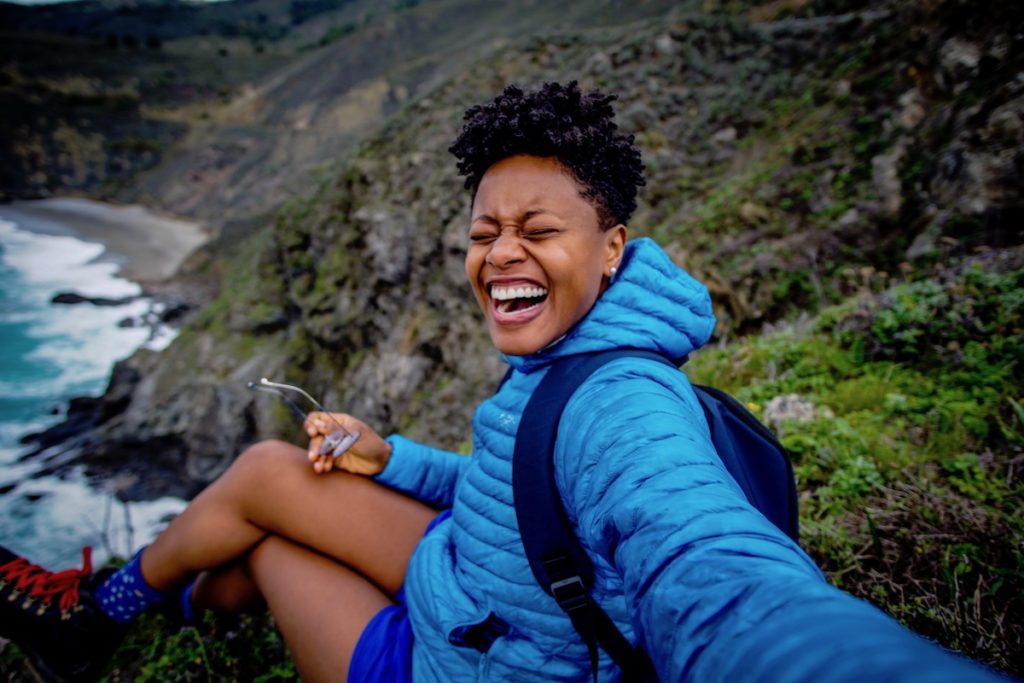
Blount on a solo adventure in Big Sur, Esselen Ancestral Lands.
Lately, Blount has trained her focus on changing how we envision the natural landscape—and specifically, how people of color are depicted within it. As outrage over George Floyd’s killing sparked conversations about systemic racism across the country, and the coronavirus pandemic precipitated a spike in traffic to national parks, Blount was compelled to bring the outdoor and adventure industry into the dialogue. “I looked up these [adventure] magazines to see the last time they had a person of color on the cover and it was often not even in the last two years,” she says.
In response, she designed and posted to Instagram a series of speculative covers for major outdoor publications, each featuring her powerful portraits of climbers of color of all genders. With these visual provocations learned from consulting, Blount asked fellow adventurers to “imagine if [they] didn’t have to imagine.” Blount’s project also explicitly called upon leading outdoor brands to step up their efforts to build a more diverse and inclusive industry. “June was such a harrowing month,” Blount recalls. “Doing this storytelling was all about illuminating joy outside and rethinking how I can keep elevating people who should be on covers.”

Covers from Blount’s viral social media series. Image courtesy of her Instagram (@urbanclimbr).
The social media posts that Blount thought would only get a few hundred likes ended up going viral. All but one of the publications and brands she tagged in the posts responded; one brand called and apologized, and several others offered her advisory roles. A few months later, when
Outside’s September/October issue arrived on newsstands, it was Blount’s joyful face gracing the cover—but only after a personal promise from the magazine’s editor to do more to represent adventurers of color.
Blount believes her passion for adventure and greenspace is what drew her to studying the built environment in the first place. While in college in Atlanta, she fell in love with rock climbing—a practice that enabled her to start thinking about things more spatially. She’s quick to point out that, while she always liked thinking about the environment, “it doesn’t necessarily have to be limited to a building.”
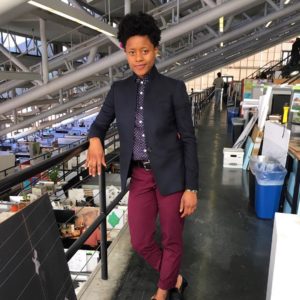
Blount (MLA ’17) during her time as a student at the GSD. Image courtesy of her Instagram (@urbanclimbr).
After arriving at the GSD in 2014 (with a master’s degree in planning already under her belt), Blount discovered she was much more drawn to big-picture thinking than to a traditional career in design. By her second year, in addition to her design coursework and studios, she was doing an independent study course on applying innovation to landscape architecture, studying product design at the Engineering School, and taking a class on Black entrepreneurship at the Harvard Business School. Blount spent her weekends and holiday breaks networking at conferences and traveling to New York and San Francisco to meet with anyone in the field of design thinking, innovation consulting, and tech companies that would talk to her—she counts over 70 coffee meetups in one year alone—from executives at Oculus, IDEO, Pinterest, and more. Still, she didn’t let the rigorous demands of a master’s degree and an ambitious approach to starting a consulting career prevent her from climbing. “I was super religious about it,” she says with a laugh. “I went three times a week.”
After several consulting roles with blue-chip firms, Blount moved to the Bay Area and launched her independent strategic and creative consultancy,
WNDR Haus, this year. Already she’s collaborated with vaunted outdoor brands including Patagonia, Athleta, Arc’Teryx, and Topo Designs, as well as mobility startups such as Onewheel. Creating her own career path has allowed Blount to meld innovation, storytelling, and adventure with her background in design, and innovation to effect change in landscapes both geographic and social. Her advice to future GSD grads? Don’t be afraid to think beyond your discipline. “You have to keep taking risks. The most interesting people I know took their design degrees and used them in so many alternative ways, from
Teman and
Teran Evans to Jack Dangermond.”
Cooking Sections’ Salmon: A Red Herring: Are our ideas about color and nature based on fundamental misconceptions?
Cooking Sections’ Salmon: A Red Herring: Are our ideas about color and nature based on fundamental misconceptions?
How do you like your salmon?
If you prefer the natural look, that’s fine—there’s a choice of 15 official shades available. This is not a joke. According to Cooking Sections’ new book,
Salmon: A Red Herring, our commonly held ideas about color and nature are based on some fundamental misconceptions and misperceptions.
Cooking Sections is the name of a duo of spatial practitioners consisting of Daniel Fernández Pascual (the
2020 recipient of the Harvard GSD Wheelwright Prize for his research project
Being Shellfish: The Architecture of Intertidal Cohabitation) and Alon Schwabe. Adopting a multimedia, multi-discipline approach including installation, performance, mapping, and video, the London-based group explores “systems that organize the world through food” within the overlapping boundaries of architecture, visual culture, and ecology.
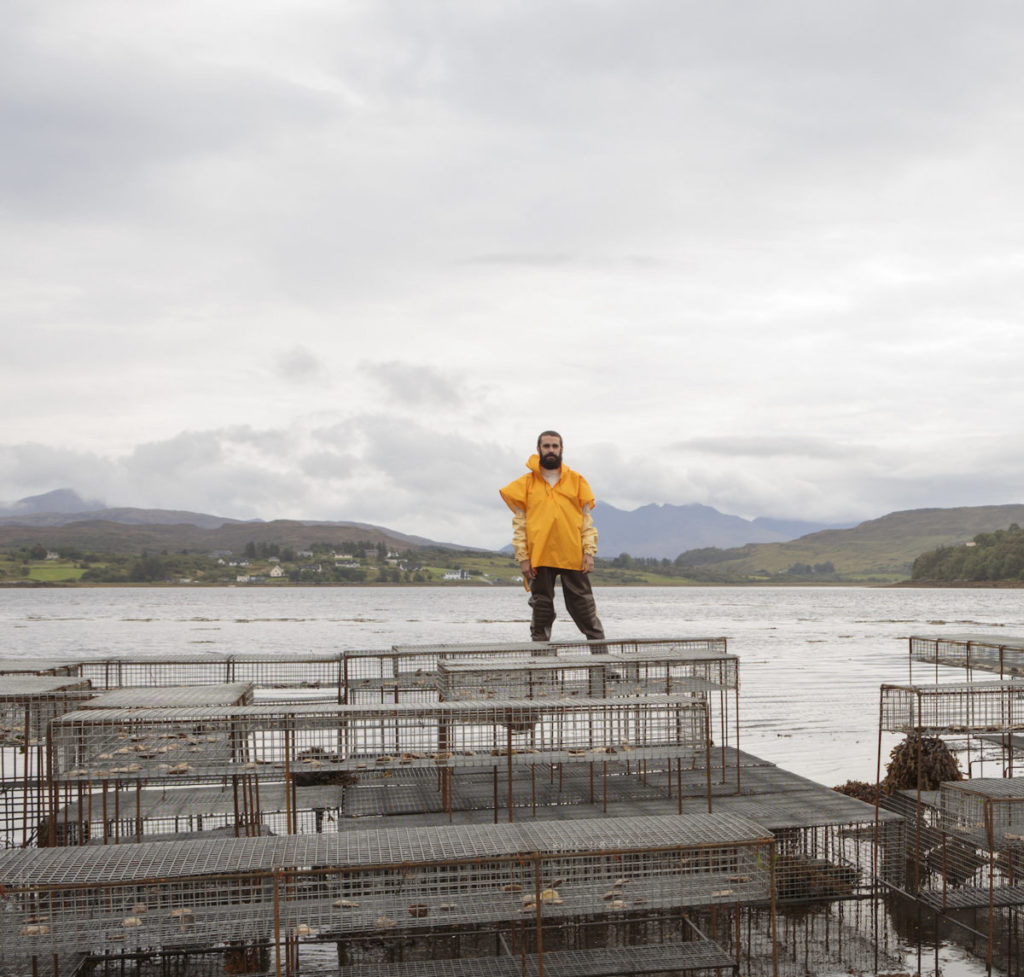
Fernández Pascual’s winning Wheelwright Prize proposal will examine the architectural potential of the intertidal zone (“coastal territory that is exposed to air at low tide, and covered with seawater at high tide”), and specifically how seaweed and waste shellfish shells can be used to create a new type of concrete—an ecologically friendly solution to one of the building industry’s biggest contributors to climate change.
takes salmon as a starting point to explore how the human desire to categorize nature into distinct, definable, and quantifiable components ignores nature’s very
nature. It examines examples of “color leaks”—where nature impinges on our preordained, man-made perception of the world’s color scheme. The mass farming of salmon, for instance, has resulted in altering the diet that determines the fishes’ color—which then has to be artificially “fixed” to make it look palatable to us. According to Fernández Pascual and Schwabe, “An increasing amount of industrial energy is directed, therefore, toward dyeing the world in natural colors so that life and commerce may proceed.”
The result is a book that is hugely informative and hugely entertaining in equal measure. Are oranges orange? Is salmon salmon? Is nature natural? Cooking Sections will make you question everything you think you know—and leave you all the wiser for understanding that you know very little.
Oranges Are Orange, Salmon Are Salmon
By Cooking Sections
Oranges require orange to be. They are a color expectation. If an orange is not orange, it is no orange.
Oranges originated in China, where they were crossbred from a mandarin and a pomelo as early as 314 B.C. From there, oranges passed from Sanskrit नारङ्ग (
nāran˙ga) through Persian نارنگ (
nārang) and its Arabic derivative نارنج (
nāranj). Traveling to continental Europe with the Moors, naranjas soon dotted al-Andalus and Sicily. Oranges arrived in England from France in the fourteenth century, their bright skins holding a taste of a color that became popular in markets, on palates, and, eventually, in tongue.
For centuries, oranges were orange and, still, orange was not a color—it was called yellow-red. It took another two hundred years for the color to earn its name, to become a form that could give itself to others—to be ascribed to flowers, stones, minerals, and the setting sun.
To the west, oranges followed the path of Spanish missionaries and lent their name to Orange County and the Orange State. In California, the fruit fed the miners of the gold rush who passed through mission towns. In Florida, there were so many groves that, by 1893, the state was producing five million boxes of fruit each year. In this tropical climate—nights too humid and too hot—oranges would ripen too quickly: they were ready to be eaten while still green. And so, from the twentieth century onward, green oranges have been synthetically dyed orange, coated to match consumer expectations. Orange reveals that humans cannot imagine a species detached from its color, even when we are the ones who detach it.
Amid all the observations that are made about industrialization and its consequences, the following is rarely heard: the world’s colors are shifting. From infancy, we describe, dream, and remember predominantly with our sense of sight, and there is no seeing without exploring, no static vision. We are raised to bend color to our will, at times admonishing it and elsewhere applying it to our liking. We grow up coloring in pictures of the world—trees are green, earth brown, and yolks yellow. That everything else in life is turned regularly upside down is only tolerable because oranges remain orange and the sky blue. An increasing amount of industrial energy is directed, therefore, toward dyeing the world in natural colors so that life and commerce may proceed.
But dyes may miss their mark. Shifting cues in flesh, scales, skin, leaves, wings, and feathers are clues to the environmental and metabolic metamorphoses around and inside us. The force that is color is not for domestication; it is fugitive. Color colors outside our lines.
*
In 2018, an eye-catching sparrow was spotted on the Isle of Skye. The sparrow was bright pink.
We know what sparrows are supposed to look like, because they have evolved with us. Over several millennia, food scraps from human settlements attracted sparrows from the “wild,” which caused them to mutate into a new species. “House” sparrows have since become a familiar sight wherever humans dwell, metabolizing the shades of our settlements into their brown-gray feathers. They are drabber than their older, tree sparrow cousins, who preserve the brighter tones of the forest.
The pink sparrow, neither forest nor house, was a color leak. The sparrow had turned [salmon].
On the Isle of Skye—whose name comes from the Gaelic for “winged”—colorful feathers lure eyes. Anglers, fishing for sport, carefully tie fish flies from synthetic rainbow plumage that resembles insects, enticing salmon. These iridescent wings are easy prey. Salmon bite on the colors that they find attractive, only to swallow a deadly hook.
In the nineteenth century, colonists in the tropics were drawn to exotic birds and sent them back to Britain. These startling hues and patterns inspired new recipes for salmon flies, and plucked feathers, far from their origins, were used to pluck salmon from their natal streams. A combination of toucans, peacocks, and macaws, the flies mimicked salmons’ cravings. Hued plumage was used to deceive: to confuse the edible and the deadly. Salmon, beings for whom the ingestion of color is essential, took the bait.
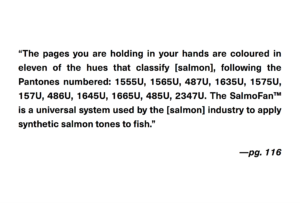
Cooking Sections, Salmon: A Red Herring (isolarii, 2020)
Salmon are at home in color. Whipping her tail, a female salmon spends two days making a depression in the riverbed called a
redd—the word probably comes from the Early Scots
ridden, meaning “to clear”—into which she deposits her roe. Fertilized, these red spheres of nutrients encase young salmon, who eat their way out, taking the color inside. Once the eggs are depleted, salmon swim to the ocean in search of food. There, they feed on red-pink crustaceans, mostly shrimp and krill, as well as small fish with even smaller crustaceans in their digestive systems. From these, they absorb yellow-red orange fat-soluble pigments, called carotenoids, that tint salmon salmon.
Crustaceans swimming at 63°29’19.8″ N, 10°21’55.7″ E might be redder than those at 56°52’01.7″ N, 6°51’00.6″ W, but pinker than those at 56°41’24.9″ N, 175°58’53.5″ W. Salmon record their location by metabolizing these shades—their flesh is color-coordinated. If salmon could peer inside their own bodies, they could distinguish, from their muscle tones, the Trondheim Fjord from the waters of Skye or the Bering Sea.
When salmon are ready to breed, they stop eating. Their stomachs shrink to the size of an olive, to make room for roe and milt, and they are drawn back to their birthplace, searching for home against the current. They follow what scientists suspect to be inherited maps encoded in their DNA, tracing chemical pathways and geomagnetic fields, which can lead them on journeys of more than three thousand kilometers.
Upon reaching fresh water, which bears murky river silt, salmon retinas trigger a biochemical switch that lets them see in infrared for clarity. Changes in sea temperature and water composition, in turn, activate memories of their original stream. Their senses act like a compass—not to determine the location of home, but rather the direction toward homecoming. Olfactory imprints allow salmon to swim through a smell-bank in their brain—what humans would think of as “remembering.” For salmon, this is perhaps not an active decision; it is an urge to return, to retrace innate memories homeward, extending to the moment of their birth.
The swim upstream requires such great exertion that it pushes red pigment to the surface of a salmon’s skin—a sign of health that lures mates. Female salmon pass on carotenoids in their flesh, to plump their roe and make it attractive to prospective males. Color streams through generations, linking salmon to their redd. Salmon color is the pathway—metabolic and geographic—of being; it is the atmosphere in which salmon are born and what they advertise when they spawn and die. Color in this cosmos, then, is more than cosmetic—it is a biological influence as strong as memory.
Salmon are a means by which color moves according to a logic of ingestion: salmon metabolize their color, drawing life from it, and humans, craving this color species, consume an image of health.
*
Such is the human thought of salmon: scales encasing ink-perfect pink flesh, a river leaping with fish on the run. A color bound to a body, a body bound to its own name.
On Skye, however, this pictorial logic is fading. Skye no longer runs salmon: populations have fallen to historic lows and corporate aquaculture has filled the waters around the island with intensive open-net salmon farms. Salmon—the color and the fish—is a red herring.
Open-net fish farms are flow-through feedlots, packed to the gills. Enclosed in pens with one to two hundred thousand other fish, a salmon cannot feed on krill and shrimp. Here, a salmon is naturally deprived of astaxanthin, the carotenoid that makes crustaceans pink and that protects a salmon’s body from solar radiation and stress. A salmon’s color reflects its well-being: darker pink salmon represents access to astaxanthin-rich crustaceans, whereas pale pink salmon represents a lack of nutrients or high stress levels. Farmed salmon, lacking these resources, are no longer truly salmon. Their flesh tone is now closer to white-gray than red. Salmon, the fish, are cleared of salmon, the color. Once they are gray, they are [salmon].
Salmon: A Red Herring is the August/September publication from isolarii, a series of books that articulates a new humanism. The book features forwards by Hannah Landecker, Bruno Latour, Hans Ulrich Obrist, and David Zilber. Sacred Groves and Secret Parks: A two-day colloquium focused on the landscapes of Orisha
Sacred Groves and Secret Parks: A two-day colloquium focused on the landscapes of Orisha
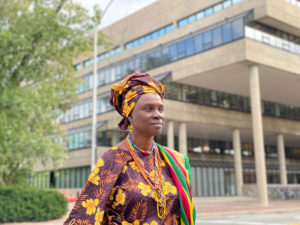
Princess Faniyi in front of Gund Hall, Harvard Graduate School of Design. Photo: Moisés Lino e Silva
Princess Adedoyin Talabi Faniyi traveled from Osogbo, Nigeria, to address the 2019 “
Sacred Groves & Secret Parks” colloquium at the Harvard Graduate School of Design. The high priestess ceremoniously clanged a handbell as she called out to the audience: “To Osun, the Orisha of the waters of life, we pay homage. We say ‘asé.’” Those in the room—practitioners, scholars, and students alike—joined in chanting “asé,” which served as both the call and the response. “Let she clear the path of this conference. Let she clear the path of everyone. And may we have the successful outcome…and let the knowledge and wisdom that we share be useful for everyone.”
The two-day colloquium focused on the landscapes of Orisha, a pantheon of spiritual figures originally worshipped by the Yoruba people of what is now Nigeria. Despite taking place at the GSD, the first presenter was Professor Jacob Olupona of Harvard Divinity School. Olupona—while pushing back against the notion that the spectrum of African spirituality can be categorized monolithically—introduced the audience to common ties that religions of the continent do share: to the spatial and material environment, to the Earth’s processes, and to human culture and community.
Faith in Orisha has endured in
Yorubaland despite the violence of colonization. It also crossed the ocean to the Americas during the four centuries of the Atlantic slave trade, when as many as 15 million West Africans were kidnapped and forced into labor in the colonies of the New World. Santería, for example, traces its roots through the enslaved people of Cuba, and Candomblé is the most pervasive Orisha-based religion in Brazil.
Following Olupona’s overview, the chief organizer of the colloquium, Associate Professor Gareth Doherty, explained that speakers from Nigeria, Brazil, France, and the US would compare and contrast those “landscape traditions that fall outside of the normal Western practices.” Scales of both design and disturbance would range from the global to that of site and details.
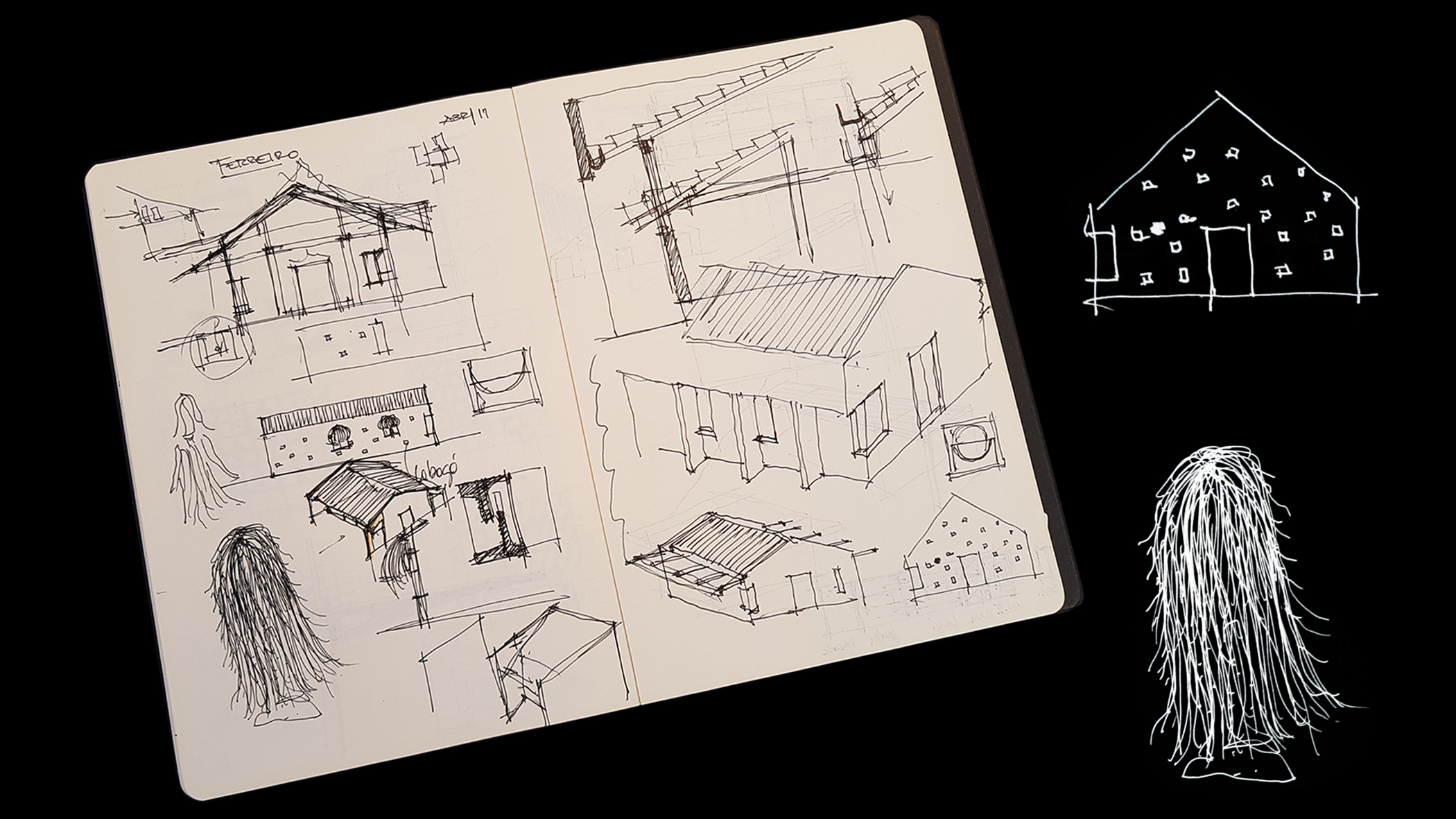
Form and ritual documented though architect’s sketches at Terreiro Tingongo Muendê. Credit: Sotero Arquitetos / Adriano Mascarenhas
From Doherty’s own fieldwork in Yoruba and Candomblé landscapes, he presented on the intriguing dimensions of an entrance stairway—with 134.5 risers—at Casa de
Oxumarê, a
terreiro [shrine] in Salvador, Brazil. When Doherty had questioned the worshippers about the curious half step, they acknowledged that the dimensionality had significance but didn’t give a reason. During a field visit in Nigeria, Doherty noticed a similar stairway condition; the explanation that was offered related to a generosity engrained in Yoruba culture.
Demonstrating those strong transatlantic bonds among Yoruba-rooted religious spaces, Moisés Lino e Silva, assistant professor of anthropological theory at Federal University of Bahia, introduced the
Osun-Osogbo Sacred Grove in Osogbo, Nigeria. Reflecting on his own experiences with Candomblé in Brazil, Silva revealed the “combination of art, religion, and ecological concern” that came to guide the creation of this rich sculptural place. Not only is the Osun Grove a landscape of beautiful sacred forms and cultural space for the Yoruba people, but with its recent listing as a UNESCO Heritage Site, it has helped secure the legal protection of ecosystem benefits. The Grove is one of the largest swaths of urban forest remaining in Nigeria.
Vilma Patricia Santana Silva, an architect training in Salvador, discussed her work volunteering with terreiro community projects. In designing and assisting in the construction of her works, Silva communicates directly with the Ilê Àse deities for guidance. Her discussion of a spiritual conflict between one specific tree and a terreiro structure prompted Gary Hilderbrand, GSD professor in landscape architecture and principal at Reed Hilderbrand, to pose a question to Silva and the panel regarding the “larger responsibility” of designers on urban sites, especially in development-intense Salvador, where Candomblé terreiros are some of the last patches of green.
Another speaker, Vilson Caetano de Sousa, Jr., a priest and a professor at the Federal University of Bahia, gave the audience an in-depth analysis of plants. Discussing the continental origins of multiple plant species, Sousa demonstrated strong ties between Latin American and African culture and spirituality. Like the Yoruba faith, plants were carried with the enslaved people from Africa to the Americas.
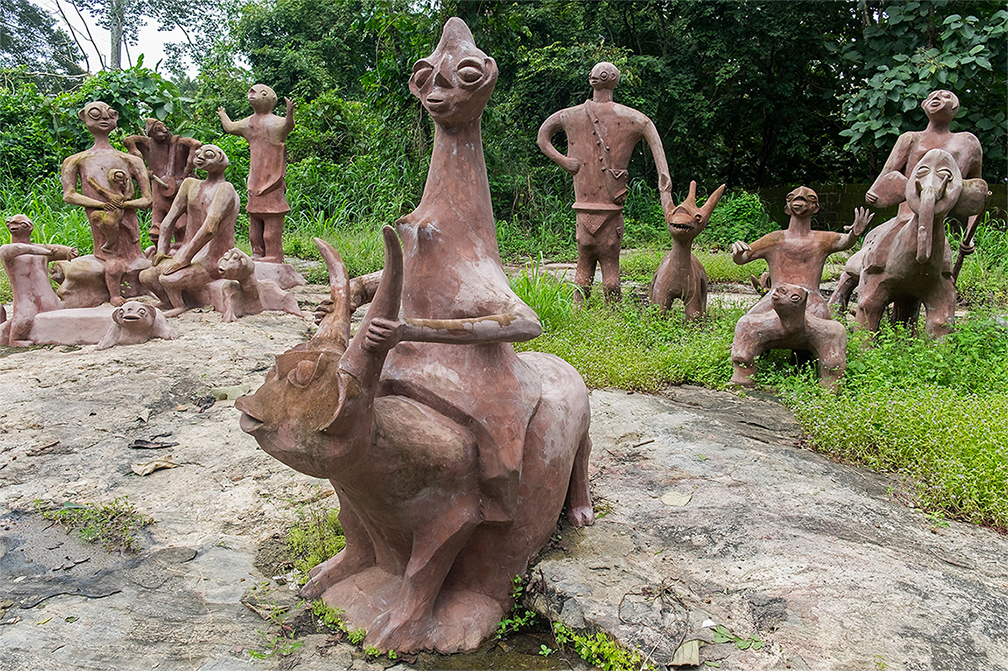
Symbolic sculptures within the Osun-Osogbo Sacred Grove, Osogbo, Nigeria. Photo: Adolphus Opara
Condomblé, Yoruba, and other Afro-diasporic, syncretic religions are united by more than just their respect for Orishas. Their practices and rituals are inherently land-based, often taking place outdoors, and, due to urban development pressures, are increasingly being forced into public-realm landscapes. Religions of the African continent also experience violent persecution. As Olupona described in his overview, “there are millions who fear it…millions across the world” who exert “time and energy trying to destroy it.” In fact, until 1977, the public practice of
Condomblé was illegal in Brazil.
Like all human activities, worship shapes both the space and the materiality of the land. But the sacred landscapes of Orisha and the religious practices that take place within them are vulnerable: even as legal and social tolerance may be slowly improving, urban development and scarcity are an ever-increasing threat. The colloquium fostered productive and revelatory conversations about the complexities and richness of spiritual culture and its relationship to the landscape. But, as Doherty said at the beginning, the program was about more than just educating and informing; it was also about subverting and “decentering Western canons of knowledge.”
The Sacred Groves & Secret Parks colloquium and exhibition was hosted by the Department of Landscape Architecture in collaboration with the Afro-Latin American Research Institute, Brazil Studies Program, David Rockefeller Center for Latin American Studies, Center for African Studies, Center for the Study of World Religions, Frances Loeb Design Library, Provost’s Fund for Interfaculty Collaboration, and Weatherhead Center for International Affairs.










 These essays were meant as a provocation, a call to action. Now, during these times of dissonance, unrest, and uncertainty, their contents have become ever more important. For the next 26 weeks [starting June 15, 2020], the GSD and the Just City Lab will republish one essay a week here and at designforthejustcity.org. We hope they may continue conversations of our shared responsibility for the just city.
We believe design can repair injustice. We believe design must restore justice, especially that produced by its own hand. We believe in justice for Black Americans. We believe in justice for all marginalized people. We believe in a Just City.”
—Toni L. Griffin, Professor in Practice of Urban Planning, founder of the Just City Lab, and editor of The Just City Essays
These essays were meant as a provocation, a call to action. Now, during these times of dissonance, unrest, and uncertainty, their contents have become ever more important. For the next 26 weeks [starting June 15, 2020], the GSD and the Just City Lab will republish one essay a week here and at designforthejustcity.org. We hope they may continue conversations of our shared responsibility for the just city.
We believe design can repair injustice. We believe design must restore justice, especially that produced by its own hand. We believe in justice for Black Americans. We believe in justice for all marginalized people. We believe in a Just City.”
—Toni L. Griffin, Professor in Practice of Urban Planning, founder of the Just City Lab, and editor of The Just City Essays

 These essays were meant as a provocation, a call to action. Now, during these times of dissonance, unrest, and uncertainty, their contents have become ever more important. For the next 26 weeks [starting June 15, 2020], the GSD and the Just City Lab will republish one essay a week here and at designforthejustcity.org. We hope they may continue conversations of our shared responsibility for the just city.
We believe design can repair injustice. We believe design must restore justice, especially that produced by its own hand. We believe in justice for Black Americans. We believe in justice for all marginalized people. We believe in a Just City.”
—Toni L. Griffin, Professor in Practice of Urban Planning, founder of the Just City Lab, and editor of The Just City Essays
These essays were meant as a provocation, a call to action. Now, during these times of dissonance, unrest, and uncertainty, their contents have become ever more important. For the next 26 weeks [starting June 15, 2020], the GSD and the Just City Lab will republish one essay a week here and at designforthejustcity.org. We hope they may continue conversations of our shared responsibility for the just city.
We believe design can repair injustice. We believe design must restore justice, especially that produced by its own hand. We believe in justice for Black Americans. We believe in justice for all marginalized people. We believe in a Just City.”
—Toni L. Griffin, Professor in Practice of Urban Planning, founder of the Just City Lab, and editor of The Just City Essays







